
GRINDING AND OTHER ABRASIVE PROCESSES
2023.9.13 Grinding. Material removal process in which abrasive particles are contained in a bonded grinding wheel that operates at very high surface speeds. Grinding wheel are usually
consulter en ligne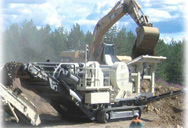
What is Abrasive: Definition, Types, Applications
2024.3.26 Learn what abrasive is, how it works, and what types of abrasives are available for different purposes. Find out how to choose, use, and maintain abrasives safely and effectively.
consulter en ligne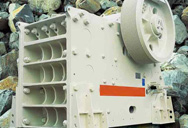
Understanding Abrasive Materials: Types,
2023.11.22 Abrasive materials, as the term suggests, are complex substances used to clean, grind, smoothen, or polish surfaces. Characterized by their hardness, durability, and grittiness, these materials exhibit high
consulter en ligne
Advances in grinding tools and abrasives - ScienceDirect
2022.1.1 This paper details how recent developments in basic tool technology (structure, binder, abrasives) is increasing tool and abrasive resilience while reducing production inputs.
consulter en ligne
Selection of Abrasive Materials for Manufacturing Grinding
2018.1.1 A grinding wheel is defined by the type of abrasive material, bonding material, grain size, structure of the wheel, and grade of the wheel used for the machining of a
consulter en ligne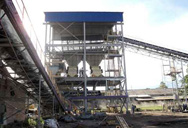
Lesson 6 - GRINDING AND OTHER ABRASIVE
2023.9.13 Grinding. Material removal process in which abrasive particles are contained in a bonded grinding wheel that operates at very high surface speeds. Grinding wheel are usually
consulter en ligne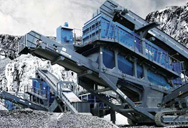
Grinding Processes - SpringerLink
Learn about grinding, a machining process that uses hard, abrasive particles as the cutting medium. Find out the types of grinding operations, wheels, mechanisms, and parameters
consulter en ligne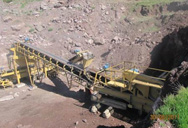
Abrasive Material - SpringerLink
Grinding, in general, is a very complex material removal operation involving cutting as well as plowing and rubbing between the abrasive grains and the work material (Shaw 1972, 1996). In
consulter en ligne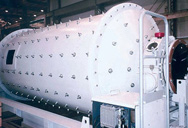
Mechanical behavior and modeling of grinding force: A
2023.9.29 The material removal process of grinding is high-speed cutting of workpiece surface by abrasives. The grinding force is generated in materials removal process, which
consulter en ligne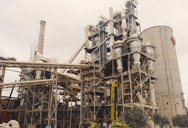
Grinding Processes - SpringerLink
Grinding is the common collective name for machining processes that utilize hard, abrasive particles as the cutting medium. The grinding process of shaping materials is probably the oldest in existence, dating from the time prehistoric humans found that they could sharpen their tools by rubbing them against gritty rocks.
consulter en ligne
Metal Grinding Tools: The Complete Guide - Red
Diamond wheels are used for grinding non-ferrous materials, while CBN (Cubic Boron Nitride) wheels are suitable for ferrous metals. When choosing a grinding wheel, consider the following factors: Wheel Material: Select the appropriate
consulter en ligne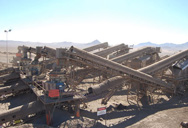
Grinding and Abrasive Machining –
Boded abrasives may be mounted onto shafts, arbors, or other toolholding elements. Both free and bonded abrasive machining processes require careful selection of the abrasive material and the operating parameters to achieve the
consulter en ligne
Surface Grinding: A Guide to the Process and Precision - okdor
2024.1.11 Surface grinding machines utilize various abrasive materials in grinding wheels. For instance, aluminum oxide grinding wheels are versatile and commonly used for different surfaces. On the other hand, cubic boron nitride (CBN) and diamond abrasives are reserved for more challenging materials, offering high precision in grinding operations.
consulter en ligne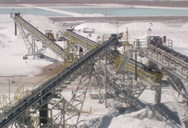
Guide about Grinding Wheels Types, Material Specifications
2021.4.7 Grinding Wheel in Industry. A vitrico grinding wheels is the most common equipment in the metallurgy industry. Grinding Wheel cuts metals with different sizes, shapes, and efficiency. Grinding Wheel is generally composed of two types of materials. One is the abrasive cutting compound used for grinding in
consulter en ligne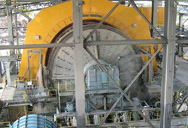
What is Grinding? – Working Principles ... - Hindustan Abrasives
Abrasive materials harder than the workpiece material are used for grinding. -Abrasive materials softer than the workpiece material are used for polishing. Abrasive materials with a Mohs hardness of 9 or 10 are used for lapping. The coarser the abrasive, the higher the speed and the lower the pressure.
consulter en ligne
Abrasive Material - SpringerLink
Properties of Abrasives. The abrasive grain must be harder than the material being ground so that it can penetrate the surface and remove a suitable chip (Fig. 1).In addition to this, the abrasive grain must be tough enough to withstand the shock (thermal and mechanical) of grinding and yet be friable enough to fracture and produce new cutting edges (Krar 1995; Salmon 1992).
consulter en ligne
Machining 101: What is Grinding? Modern Machine Shop
2021.7.3 Grinding takes an abrasive and uses its many grains to cut a workpiece. Variations on this process are useful for a wide variety of applications. ... These grind extremely hard materials, with CBN working on hard steels for precise profiles and finishes, and synthetic diamond working on hard nonferrous material like tungsten carbide and cermets ...
consulter en ligne
Grinding Wheel - Abrasives, Properties, Shape and Structures
2022.5.26 Grinding Wheel. In the grinding process, an emery or corundum wheel is used as the cutting tool. Emery and corundum are naturally found abrasives and are impure forms of aluminium oxide Al 2 O 3.A grinding wheel is made up of thousands of tiny abrasive particles embedded in a matrix called the ‘bond’ An abrasive is an extremely hard material second in
consulter en ligne
Abrasive Material Types Industrial Applications of Abrasives
2020.12.26 Abrasives are typically made of hard metals used to shape or complete a piece of work in various industrial and domestic applications for woodworking and metalwork. In general, abrasives are used by hand or machine to grind wood or mineral pieces away. It gives a sleek, elegant, or finished look or slowly carries away a part of the material until the aspirated
consulter en ligne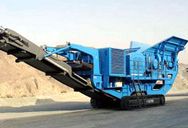
How To Read A Grinding Wheel Spec —
2024.10.7 Grinding wheels are essential tools for a variety of industries, including woodworking and metal manufacturing. These powerful abrasives precisely shape, sharpen, and smooth materials. But only when used correctly
consulter en ligne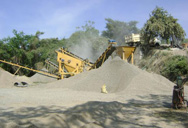
Influence of the abrasive shape-position
2023.12.13 Grinding is a generally utilized method, removing excess materials through effective abrasives. The grinding abrasives with multiple shape-position characteristics play a dominant role in determining the thermo
consulter en ligne
Grinding of composite materials - ScienceDirect
2023.1.1 Based on the material removal mechanisms of MMCs, Gu et al. [52] first established a grinding-force model of a single abrasive grain, treated the grinding process with multi-abrasive grains as a black box, conducted grinding experiments, and obtained the grinding-force data under different grinding parametric conditions. Finally, the multi ...
consulter en ligne
Abrasive Machining: What it is, Its Types and Applications
2024.5.13 It is commonly used for grinding cast iron, non-ferrous metals, glass, stone, and ceramics. SiC is commonly found in grinding wheels, abrasive papers, and honing stones. Diamond: Diamond is the hardest known natural material and is used for grinding and cutting very hard materials such as carbides, glass, and ceramics. It is also used in ...
consulter en ligne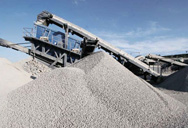
Grinding Wheels Selection Guide: Types, Features,
4 天之前 Image Credit: Norton Abrasives . Grinding wheels are used for metal removal, dimensioning, and finishing. They consist of an integral shank, pin, shaft, or mandrel that drives a mounted wheel or blades. Types of Grinding Wheels . There are many types of grinding wheels, some of which are numbered by the American National Standards Institute (ANSI).
consulter en ligne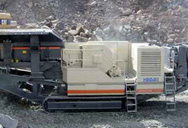
Abrasives - How do abrasives work? - Materials, Grinding
Applications for abrasives generally fall in the following categories: 1) cleaning of surfaces and the coarse removal of excess material, such as rough off-hand grinding in foundries; 2) shaping, as in form grinding and tool sharpening; 3) sizing, primarily in precision grinding; and 4) separating, as in cut-off or slicing operations.
consulter en ligne
What is Grinding Process How It Works - Different Types
2022.11.28 Grinding removes material through an abrasive process using a rotating abrasive wheel. – Part size: Turning is better suited for removing larger amounts of material quickly in a single pass to get close to the final dimensions. Grinding is used for fine-tuning dimensions and surface finish.
consulter en ligne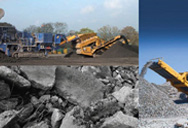
Towards Sustainable Grinding of Difficult-to-Cut Alloys—A
2024.3.11 3.1 Development of Grinding Techniques. Grinding is the most commonly used technology in abrasive machining and one of the most critical technologies for precision manufacturing difficult-to-cut alloys such as superalloys [2, 15, 31] and titanium alloys [32, 33] with high strength.It is meaningful to study and improve the sustainability of grinding technology.
consulter en ligne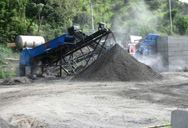
Abrasive Sponge: The Versatile Polishing and Grinding Material
Abrasive sponges, also known as sponge sanding blocks, polishing blocks, resin blocks, abrasive blocks, plastic blocks, etc., are a type of polishing and grinding material that features a sponge as its base with abrasive particles embedded on the sponge surface.These versatile tools are highly effective for a wide range of applications and offer unique characteristics that make them ideal
consulter en ligne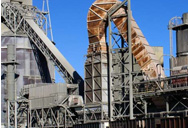
Lesson 6 - GRINDING AND OTHER ABRASIVE
2023.9.13 2002©John Wiley Sons, Inc. M. P. Groover, “Fundamentals of Modern Manufacturing 2/e” Material removal by action of hard, abrasive particles usually in the form of a bonded wheel • Generally used as finishing operations after part geometry has been established by conventional machining • Grinding is most important abrasive process
consulter en ligne
>> Next:Broyeur De Pierres Et De Plantes De La Carriere En Chine Beijing
- sable machine a laver inde
- blake concasseur à machoires avec capacité de 1000 allemagne
- lo ion de Afrique concasseur de ciment
- Broyeur marteau pour fonctionnement en calcaire
- machine de moulin Indonésie boule de seconde main
- concasseurs à machoires dans les activités minières inde cne
- demolition broyeur a bentonite a vendre
- concasseur de pierre malaisie
- machines sable de concassage dans le karnataka
- plomb concasseur a vendre en nigria
- Or Usine De Lavage De Trommel A Vendre
- le transporteur 1 le film en streaming
- Concasseur à mâchoires 400 tonnes par heure prix
- fabricant de ciment en afrique du sud manuel pdf
- concasseurs cribles vendeurs